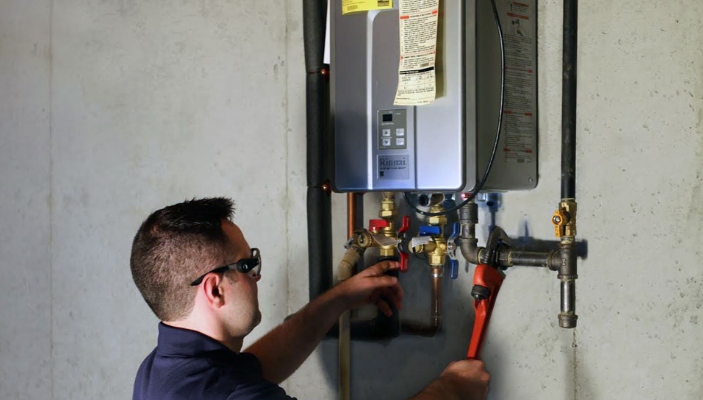Ways to Extend the Life of Your Home's Hot Water System Through Maintenance
Ways to Extend the Life of Your Home's Hot Water System Through Maintenance
Blog Article
We have come across this article on How to Maintain a Hot Water Heater in a Few Simple Steps directly below on the internet and felt it made sense to share it with you over here.

Warm water is crucial for day-to-day comfort, whether it's for a refreshing shower or cleaning meals. To ensure your warm water system runs successfully and lasts much longer, regular upkeep is vital. This short article gives useful suggestions and understandings on how to keep your home's hot water system to avoid disruptions and expensive repair services.
Introduction
Keeping your home's warm water system could appear daunting, however with a couple of simple steps, you can ensure it runs smoothly for several years to find. This guide covers every little thing from comprehending your hot water system to do it yourself maintenance ideas and understanding when to hire specialist assistance.
Importance of Preserving Your Hot Water System
Routine upkeep not just expands the life-span of your hot water system but also ensures it runs efficiently. Overlooking maintenance can result in decreased efficiency, higher power bills, and also early failing of the system.
Indicators Your Hot Water System Requirements Maintenance
Understanding when your warm water system needs attention can avoid major issues. Keep an eye out for indications such as irregular water temperature level, strange sounds from the heating system, or rusty water.
Comprehending Your Warm Water System
Before diving into maintenance jobs, it's valuable to recognize the basic components of your hot water system. Typically, this includes the hot water heater itself, pipes, anode poles, and temperature controls.
Regular Monthly Maintenance Tasks
Routine monthly checks can help catch minor problems before they intensify.
Flushing the Hot Water Heater
Flushing your water heater eliminates sediment buildup, improving performance and extending its life.
Checking and Replacing Anode Rods
Anode rods protect against corrosion inside the storage tank. Evaluating and replacing them when broken is important.
Inspecting and Adjusting Temperature Level Settings
Changing the temperature level settings guarantees optimal efficiency and safety.
Do It Yourself Tips for Maintenance
You can do a number of upkeep tasks yourself to keep your warm water system in top condition.
Checking for Leakages
Routinely inspect pipelines and links for leakages, as these can bring about water damages and higher expenses.
Checking Pressure Relief Valves
Evaluating the pressure safety valve guarantees it operates appropriately and protects against extreme pressure accumulation.
Protecting Pipelines
Shielding hot water pipelines lowers warmth loss and can save energy.
When to Call a Professional
While do it yourself upkeep is valuable, some concerns call for expert proficiency.
Facility Problems Calling For Expert Help
Instances consist of major leaks, electrical issues, or if your water heater is consistently underperforming.
Regular Specialist Upkeep Advantages
Specialist upkeep can include complete assessments, tune-ups, and guaranteeing compliance with safety and security requirements.
Conclusion
Normal upkeep of your home's hot water system is essential for performance, durability, and cost savings. By adhering to these suggestions and knowing when to look for professional aid, you can guarantee a trustworthy supply of hot water without unforeseen interruptions.
How to Maintain an Instant Hot Water Heater
Before tinkering with your hot water heater, make sure that it’s not powered on. You also have to turn off the main circuit breaker and shut off the main gas line to prevent accidents. Also turn off the water valves connected to your unit to prevent water from flowing into and out of the appliance. 2. When you’re done, you have to detach the purge valves’ caps. These look like the letter “T†and are situated on either side of the water valves. Doing so will release any pressure that has accumulated inside the valves while at the same time avoid hot water from shooting out and burning your skin. 3. When the purge valves’ caps are removed, you have to connect your hosing lines to the valves. Your unit should have come with three hoses but if it didn’t, you can purchase these things from any hardware or home repair shops. You can also get them from retail stores that sell water heating systems. Read the user’s manual and follow it to complete this task properly. When the hosing lines are connected, open the purge port’s valves. 4. You should never use harsh chemical cleaners or solutions when cleaning your unit. Make use of white vinegar instead. It should be undiluted and you’ll probably use about 2 gallons. 5. Now flush your water heater. This task should probably take about 40 minutes. We can’t give you specific directions for this because the procedure is carried out depending on the type, model and brand of your heater. With that being said, refer to the user’s manual. 6. When you’re done draining the unit, you have to turn off the purge port valves again. Remove the hosing lines that you earlier installed on each of the water valves. Put the valve caps (purge port) back in their respective places and be very careful so as not to damage the rubber discs that are found inside these caps. 7. Now that everything’s back in place, check your user’s manual again to find out how to reactivate your water heating system. 8. Once it is working, turn one of your hot water faucets on just to let air pass through the heater’s water supply pipes. Leave the tap on until water flows smoothly out of it. https://www.orrplumbing.com/blog/2014/september/how-to-maintain-an-instant-hot-water-heater/

Hopefully you enjoyed our section about What Kind of Maintenance Do Water Heaters Need?. Thanks so much for taking the time to browse our piece. Loved our review? Please share it. Let another person find it. We recognize the value of your readership.
Call Today Report this page